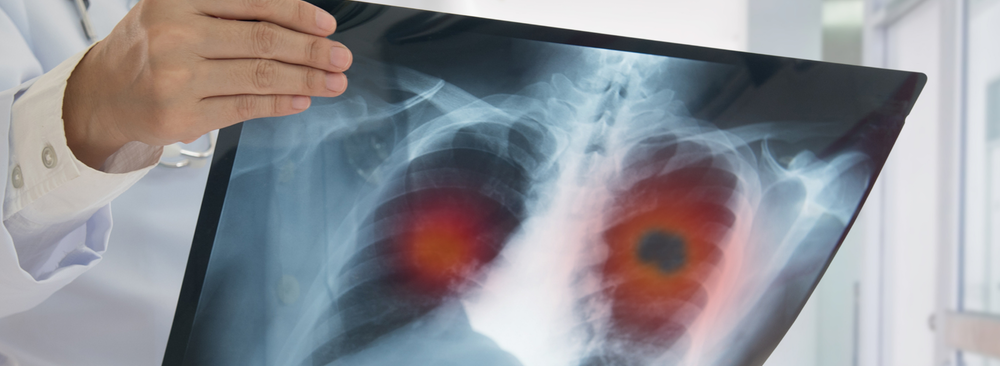THERAPY: Medical research has paved the way for the development of new therapies less invasive, and led to more personalised and effective treatments…
By WSAM Reporter
Lung cancer has typically been one of the most dreaded prognoses, and also one of the challenging cancers to treat, largely because it isn’t very noticeable at first.
More ominously, the condition is often perceived by the patient to be something minor, such as a bothersome cough. This leads to late-stage diagnoses, by which time this aggressive condition has taken hold.
In South Africa, lung cancer ranks as the Number 1 cause of cancer deaths. And, as might be expected, the most important risk factor for lung cancer remains tobacco smoking. It’s estimated that 33.4% of males and 8.3% of females above the age of 15 are consumers of tobacco in South Africa.
Other factors, such as a family history, poor diet, chronic obstructive pulmonary disease, ionising radiation, human immunodeficiency virus (HIV) infection, occupational exposures and air pollution, are also understood to establish a predisposition to lung cancer.
Unfortunately, there are no official screening programmes for lung cancer in South Africa. But, non-profit organisations such as the Cancer Association of South Africa assist with providing support for cancer research, education of the public regarding symptoms, early detection, screening, and risk reduction.
Yet, there is hope. Portia Mmenu, medical affairs manager at Johnson & Johnson Innovative Medicine South Africa, says “in recent years, lung cancer treatment and its diagnosis have undergone a significant transformation. Awareness amongst the general public has to be increased, however, as lung cancer is still largely perceived as a ‘death sentence’, which it needn’t be”.
“Patients need to be aware, however, that advancements in medical research, technology, and personalised medicine are rapidly changing the landscape of lung cancer care.”
One of the most critical changes in the treatment of lung cancer care is the emphasis on early detection. More than two-thirds of lung cancer patients are diagnosed at a late stage, after the cancer has spread to other parts of the body. The introduction of low-dose computed tomography (LDCT) scans for high-risk individuals has, however, revolutionised early detection.
Studies have shown that LDCT can reduce lung cancer mortality by up to 20%, compared to traditional chest X-rays. This non-invasive screening method allows for the detection of small, asymptomatic tumours that can be treated more effectively.
Another significant development in lung cancer treatment is the understanding of the genetic mutations that drive the disease.
“Significant research in this area is pushing new boundaries of hope,” Mmenu notes reassuringly. “Other discoveries are also paving the way for the development of targeted therapies that are less invasive, and lead to more personalised and effective treatments.”
Although chemotherapy, radiation, and, in some cases, surgery are the mainstay of treatment, the medical industry has made great advances in developing less blunt instruments. While chemotherapy, for example, has its uses, it can also affect the overall well-being of the patient.
“EGFR inhibitors and ALK inhibitors demonstrated remarkable results in patients with the two most prominent types of lung cancer.” says Mmenu. “These therapies have demonstrated improved survival rates and reduced side effects, compared to the more conventional options.”
And then there’s immunotherapy.
“This approach,” Mmenu explains, “harnesses the body’s immune system to recognise and attack cancer cells. By blocking the proteins that prevent immune cells from attacking cancer cells, these drugs enable the immune system to mount a stronger and more sustained response against the tumour. This branch of treatment heralds a quantum leap forward in lung cancer care.”
“Cancer treatment isn’t only about attacking the cancer cells, but is also very concerned with the ongoing tracking of tumour progression, and the therapeutical response thereto.”
In this area, there has also been remarkable progress, with liquid biopsies garnering widespread attention as an innovative diagnostic tool, owing to their less invasive nature and thus, their capability for frequent and continuous sampling.
This represents another element of the paradigm shift in lung cancer treatment, with a team of specialists, including oncologists, radiologists, thoracic surgeons, pathologists, and pulmonologists, working together to develop individualised treatment plans. This collaboration ensures that patients receive the most appropriate and effective therapies.
“What we should never forget,” Mmenu cautions, “is that, in the midst of all this research and new treatments and technologies, is the patient; a person who is plagued with anxiety about a premature mortality, as well as other matters, such as reduced vitality and physical activity, and a drop in real income, caused either by treatments, an inability to work, or both.
Support groups such as CANSA supply guidance in these areas, which can prove invaluable to both patients and those who are close to such individuals.”
Early detection, targeted therapies, multidisciplinary care, and patient advocacy are transforming the landscape of lung cancer care, and patients should be encouraged by these recent advancements in medical science and technology, and take heart in the fact that the outlook is more hopeful than ever before.





























